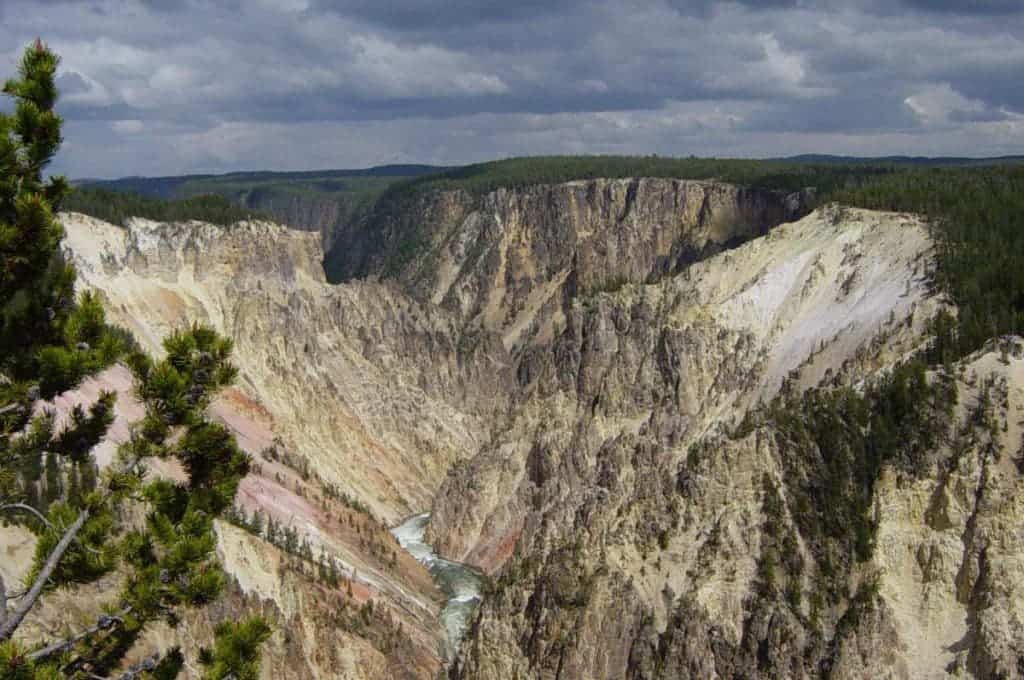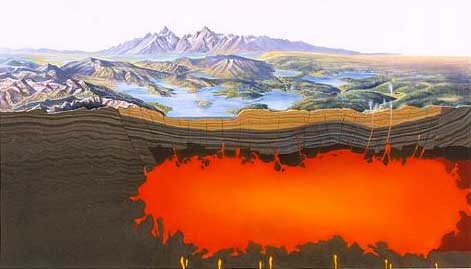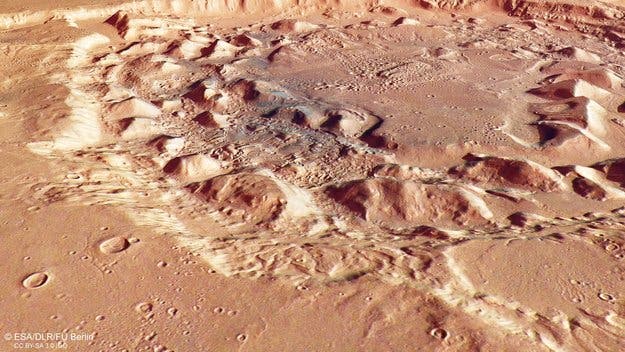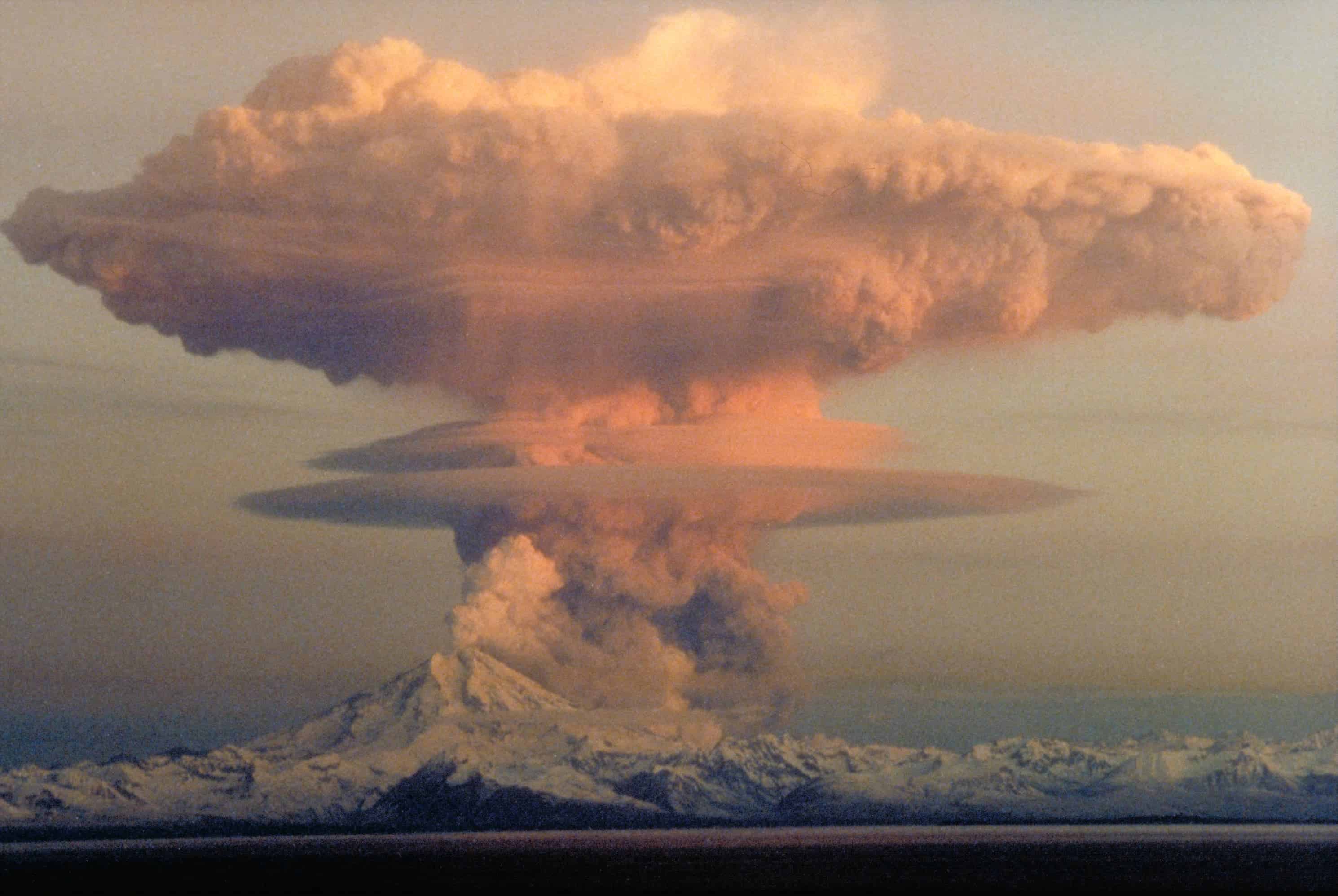Beneath the beautiful Yellowstone Park lies an incomprehensibly massive supervolcano. It erupts roughly every 650,000 years, and guess what? It’s been almost 650,000 years since the last eruption.

Geologists differentiate between volcanoes and supervolcanoes — and there’s a good reason for it. Volcano eruptions can be massive and affect millions, but supervolcano eruptions affect the entire planet. There are about 20 known supervolcanoes on Earth, including Lake Toba in Indonesia, Cerro Galán in the Andes, and, of course, Yellowstone.
The Yellowstone volcano is a hotspot, an immobile region fed by magma rising from the underlying mantle. According to analysis of earthquake data in 2013, the magma chamber is 80 km (50 mi) long and 20 km (12 mi) wide. Yellowstone easily has the ability to eject 1,000 cubic kilometers of rock and ash — 250,000 times more than the infamous Mount St. Helens eruption in 1980. If such an eruption occurred, the effects would be devastating. Lava flow won’t spread much — it would be restricted to the vicinity of the park, and vents and fissures would emerge about 10 km around the caldera. Most of the real damage, however, would be caused by the airborne ejecta.
[Also read: Geophysics shows plume of Yellowstone volcano is much larger than previously believed]
The ash would be devastating for much of the United States, and temperatures could drop significantly all around the world. It’s hard to estimate what the net effect would be, but it’s safe to say that it would be massive. Yellowstone has erupted at least three times: 2.1 million years ago, 1.3 million years ago, and 630,000 years ago. We seem to be in the ‘right’ timeframe for another eruption, but thankfully, there seems to be no indication it will happen anytime soon. Even if it were to erupt, we might get some kind of kind of warning. However, a new study puts that last bit into question: the forces driving these destructive events could unfold much quicker than we originally anticipated.
“If something like this happened today, it would be catastrophic,” said Hannah Shamloo, a geologist at Arizona State, speaking to the American Geophysical Union. “We want to understand what triggers these eruptions, so we can set up warning systems. That’s the big-picture goal.”

Hannah Shamloo and her colleagues spent weeks at Yellowstone gathering samples. She then analyzed the large crystals in the volcanic rock — these are phenocrysts, which are crystals too large to have formed during the eruptions. These crystals grow slowly outward, carrying within information about their formation conditions (especially about the pressure and temperature). From this, she learned that conditions inside Yellowstone changed just decades before the eruption — the blink of an eye in geological time. Researchers were expecting something like this to happen over the course of thousands of years (which is also not a lot, geologically speaking).
“It’s shocking how little time is required to take a volcanic system from being quiet and sitting there to the edge of an eruption,” said Ms. Shamloo, warning that more research is still necessary before we can draw definite conclusions.
Yellowstone is riddled with geophysical sensors that record temblors and other environmental changes in and around the caldera. Having even an imprecise warning system could prove to be invaluable, but research is demonstrating just how difficult predicting volcanic activity can be. We might be thousands or even hundreds of thousands of years away from an eruption. It might not happen at all. Or, it might happen in a few decades. The only way we’ll have a chance of knowing is through science.
The study has been presented at a recent volcanology conference and has not yet been peer-reviewed.






